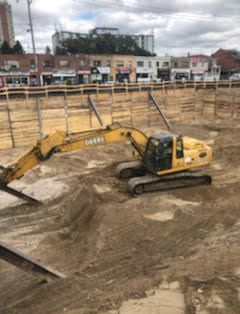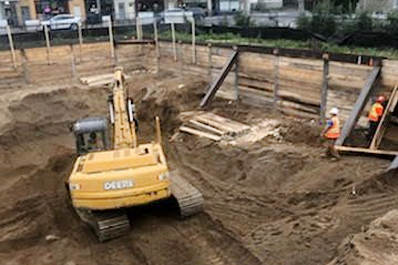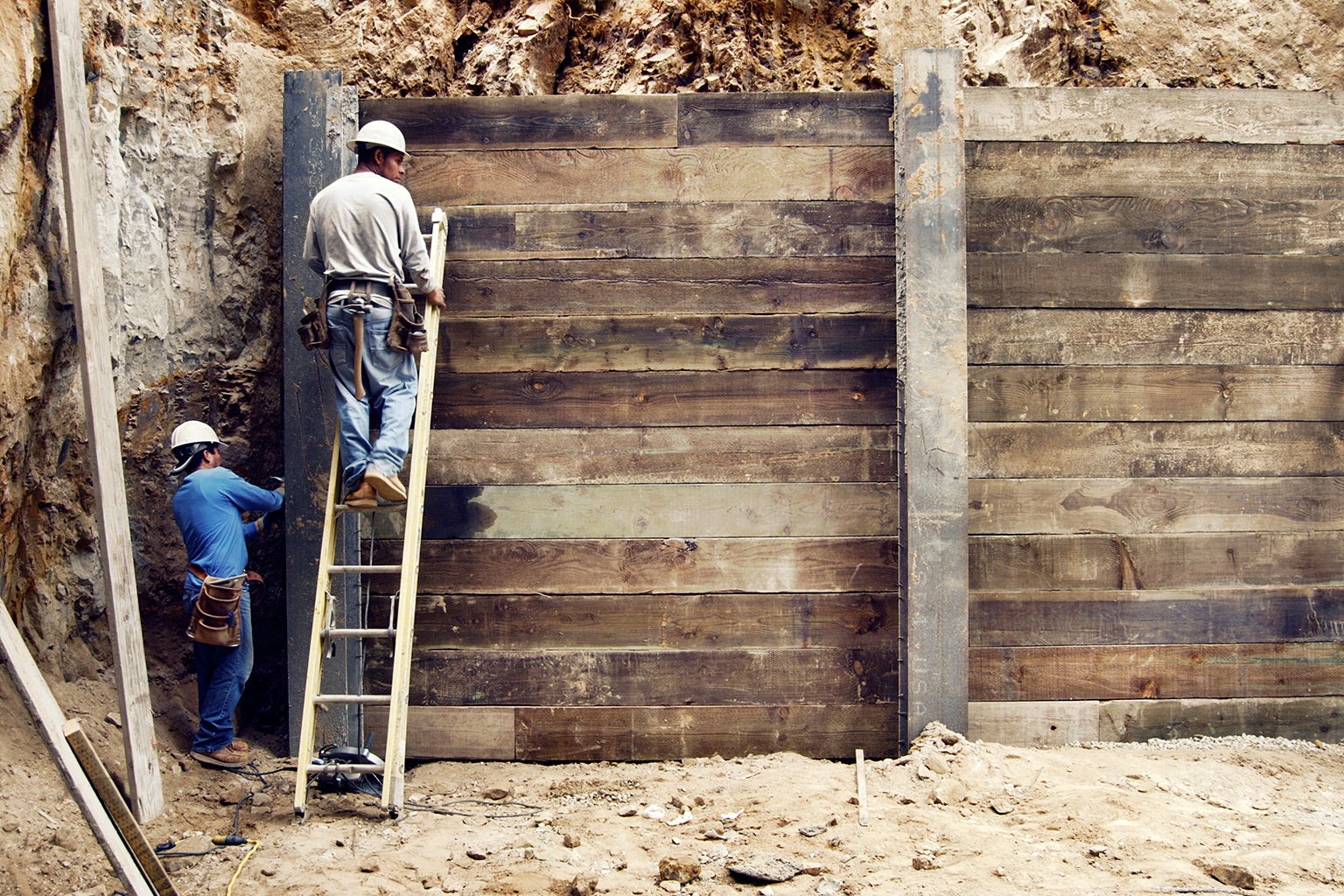Have you you ever wondered what the process of shoring is?
 Shoring is the process of temporarily supporting a vessel, building, structure, or trench with shores (props) when in danger of collapse or during repairs or alterations. In this particular instance, we are talking about shoring in reference to construction. When people think of shoring more often than not when installing the foundation of a building. A shoring system such as piles and lagging will support the surrounding loads until the underground levels of the building are constructed.
Shoring is the process of temporarily supporting a vessel, building, structure, or trench with shores (props) when in danger of collapse or during repairs or alterations. In this particular instance, we are talking about shoring in reference to construction. When people think of shoring more often than not when installing the foundation of a building. A shoring system such as piles and lagging will support the surrounding loads until the underground levels of the building are constructed.
This is common during remodelling, moving a house to a new location or repairing a pre-existing crumbling foundation. Often in the process of renovating a building, a builder may need to remove certain load bearing structures, such as walls, beams or part or all of the building’s foundation. Some other common events that may require shoring are bulging walls, when wall cracks arise due to the irregular settlement of a foundation, if an adjacent structure is being taken down, or when openings are being made or enlarged in a pre-existing wall. Essentially, shoring is the creation of a temporary structure, to support an unsafe structure temporarily.
Depending on the type of shoring or depth of excavation project, soil anchors may be required. It is imperative to keep structural elements stable to prevent collapse during building construction, renovation, and expansion activities. For old structures lacking reliable structural drawings, it’s most likely that a thorough site inspection will need be conducted. Shoring is a highly specialized operation, and it requires not only engineering knowledge, but also substantial experience and specialty equipment. When the foundation of a building is being replaced it is placed on cribs, beams and steel structures. If only a specific section of a building requires shoring, there are a variety of hydraulic and mechanical jacks available for this purpose.


During excavation operations such as removing a section of a hillside, the remaining soil may need to be equipped with temporary shoring until new retaining walls are constructed. Shoring excavated ground for soil retention is a highly specialized operation that requires extensive engineering knowledge as well as substantial experience. How and to what extent the excavated ground requires shoring is entirely dependent on the properties of the soil in question. Every type of soil presents its own set of unique challenges: rocky soil, soil or clay. The grade of the hillside, the type of permanent retaining wall that is being constructed and the available access to equipment are all also factors that need to be taken into consideration. Some examples of shoring that are commonly used for excavated ground are: soldier pile and lagging, soil nails & shotcrete, and pressure grouting.
If you are entertaining renovations which may require shoring, it is always best to contact a company that has highly skilled staff as shoring is a specialized industry. Shoring requires not only engineering knowledge, but a vast array of experience and specific equipment.
